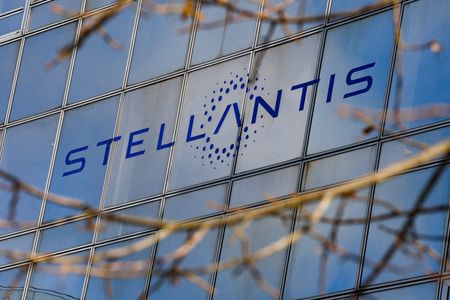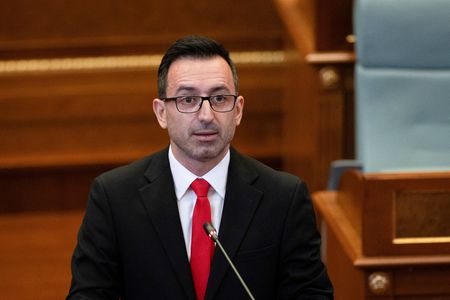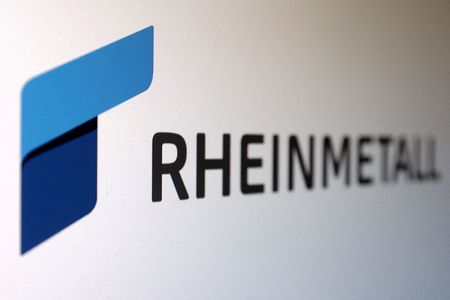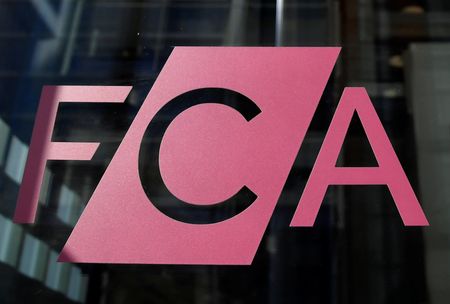By Nora Eckert
DETROIT, August 26 (Reuters) -Stellantis has shelved its first Level 3 advanced driver-assistance program because of high costs, technological challenges and concerns about consumer appetite, three people familiar with the matter told Reuters.
As recently as February, Stellantis said its in-house system, which is part of the AutoDrive program, was ready for deployment and a key pillar of its strategy. The company said the system, which enables drivers to have their hands off the wheel and eyes off the road under certain conditions, would allow them to temporarily watch movies, catch up on emails, or read books.
That Level 3 software was never launched, the company confirmed to Reuters. But it stopped short of saying that the program was canceled.
“What was unveiled in February 2025 was L3 technology for which there is currently limited market demand, so this has not been launched, but the technology is available and ready to be deployed,” a Stellantis spokesperson said.
The three sources, however, said that the program was put on ice and is not expected to be deployed. When asked how much time and money was lost on the initiative, Stellantis declined to say, responding that the work done on AutoDrive will help support its future versions.
Former Stellantis CEO Carlos Tavares offered a glimpse into the company’s plans for AutoDrive in 2021, saying it was one of three core technology platforms that would arrive in 2024.
“Software strategy is one of the key building blocks of Stellantis’ overall strategy,” he said.
Traditional automakers have been spending billions in recent years to engineer software-focused vehicles that can be frequently upgraded, like smartphones, a capability pioneered by Tesla and advanced by a slew of Chinese electric-car brands. Many legacy competitors have run into problems as they try to catch up, impeded by mounting costs, a lack of talent, and the bureaucracy that permeates century-old automakers.
‘HIGH INVESTMENT FOR HIGH RISK’
Stellantis said it is leaning on aiMotive, a tech startup it acquired in 2022, to deliver the next generation of the AutoDrive program. Stellantis declined to say when that program would be ready for market or if it would include Level 3 capability.
AutoDrive is part of a three-pronged technological platform called “STLA ABC.” It includes Stellantis’ in-car software system, SmartCockpit, and its STLA Brain electrical architecture, which is a foundation of software and hardware that allows the vehicles to be frequently updated with new features or fixes.
The automaker and Amazon’s partnership on its SmartCockpit infotainment system ended recently, Reuters first reported, and Stellantis said it will now use an Android system.
The strategic shift around AutoDrive is the latest sign that Stellantis has struggled to execute on its tech ambitions. The automaker is now increasingly relying on suppliers to deliver software that it hoped to keep in-house, four people familiar with the matter said.
Stellantis said it will focus its internal work on what differentiates the final product for customers, while working with select suppliers to ensure access to the best technology at competitive costs.
These strategic shifts are becoming prevalent in the industry as automakers pick which technologies to pursue, said Stuart Taylor, chief product officer at software consultancy Envorso.
“I think what you’re seeing now is a change in the relationship,” Taylor said of automakers and their suppliers, adding that major automakers are reckoning with how they cannot do it all alone.
Working independently means automakers have to absorb the initial costs of these software programs, and also face the price of failure if they do not succeed, he said.
“It’s high investment for high risk,” Taylor said of ADAS programs in particular.
THE FUTURE OF ADAS
The pressure to cut costs is pronounced at Stellantis as it emerges from a turbulent year of drooping sales. Following Tavares’ abrupt departure last year, recently appointed CEO Antonio Filosa is plotting a new course for the company. He is expected to outline those plans in early 2026.
Stellantis’ New York-listed shares have lost more than 40% in the last 12 months. They closed down 2% at $9.93 on Monday.
Driving assistance systems like AutoDrive, which automatically steer and brake in certain situations, have become a focal point for automakers as they seek to generate subscription revenue from their fleet. Stellantis in 2021 targeted 20 billion euros ($23.41 billion) in annual revenue from software-related products and subscriptions by the end of the decade.
Assisted-driving tech is also considered a precursor to fully autonomous cars, a technology that analysts say can unlock huge new markets for ride-hailing fleets as well as personal self-driving vehicles.
($1 = 0.8542 euro)
(Reporting by Nora Eckert in Detroit; Editing by Mike Colias and Matthew Lewis)










